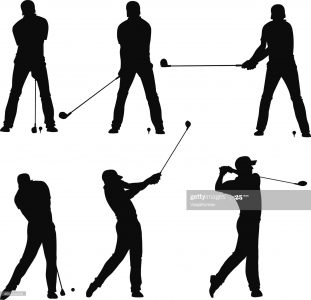Table of Contents
Introduction
It takes a combination of different factors for you to play golf and have a great performance. You have to select the right equipment carefully, learn multiple rules and practice often. However, the most important thing you would have to learn and improve upon when it comes to golfing is your golf swing. The golf swing will determine if your ball will land in the target, and it also determines the level of enjoyment you get from playing the game. If you are a beginner, then you need to learn how to swing your golf club to achieve the perfect shot. If you are already familiar with golf, then improving your golf swing should be a priority. It would be best if you also learned about common golf swing mistakes that you might have made or still make. Improving your golf swing is not rocket science; with just a few tips and regular practice, you could be playing like a professional in no time. This article has been specially compiled to show practical steps that you can take to improve your golf swing. The later part of the article also explains the common mistakes that golfers make that stop them from achieving the perfect swing. Enjoy!

3 Steps to Achieving the Perfect Swing
If you are a beginner, then you should practice these steps more painstakingly. Below are three easy steps you can follow to have a better club grip and improve your overall golf performance.
Hold your golf club in a natural and comfortable grip
The golf grip is an important first step to making the perfect swing. We have already discussed how we can hold and grip a golf club on this platform; however, we would still explain how you can hold your golf club in a secure, natural and comfortable grip. The first step is to grab the grip with your weaker hand (this is usually the left hand for most golfers). It would be best if you held the grip with your fingers wrapped around it and your thumb sticking out. The next step is to position your stronger hand below the weaker hand and wrap it around the grip in a similar fashion. When you are done, you should then apply a grip that is comfortable for you. It could either be an overlapping grip, an interlocking grip or any other grip that suits you.
Take the perfect stance
If you want your shot to go as intended, then you need to have the right body posture for the shot. The major parts of the body involved in this process are your feet, arms, shoulders and knees. After you have secured your golf club in a natural, comfortable grip, you should spread your feet wide apart. Your feet should not be too far apart; they should only be as wide as your shoulder width. After you have done this, the next step is to ground the club and address the ball. This will require you to bend your knees slightly and extend your arms straight. You should not bend your back for any reason because it will prevent you from carrying out the swing. After lowering your arms and bending your knees appropriately, the sweet spot of the golf club should be behind the ball, looking straight towards the target. Your arms and your back should be straight at this point. If you have to bend any of them to reach the ball, then you have not performed the process correctly.

Perform your swing
The perfect golf swing involves three major processes. These are the backswing, the downswing and the follow-through. One trick that you can note is that the completion of these three steps should give you a circular motion movement. Let’s take a look at these steps.
- The backswing: The backswing involves slowly taking away the golf club from the ball. This step could set you up for a great shot or an average one. What you should do is slowly move the club using your shoulders and arms. As you keep moving back, your lead knee should tilt towards the ball, and your hips and torso should rotate backwards. You should keep your arms fully extended during this process, and once your club is above shoulder height, you should bend your wrists so your club can go higher.
- The downswing: Once your backswing reaches the full height, you should be prepared to take the shot. Everything you did in the backswing will be reversed with more speed in the downswing. It would be best if you started by shifting your weight to your front foot and then turn your front hip towards the target. Your arms and shoulders should follow in quick succession. This is a very fast process, and this is the stage where your club head impacts the ball. Your eye should always be on the ball throughout the swing process. The swing speed will be determined by how far you want to ball to go; however, do not allow the speed to be more than your weight shift.
- The follow-through: At this point, you have already hit the ball, and it is well on the way to the target. However, your body still needs to hold a certain form for the process to be complete. Once you have successfully impacted the ball, your hips should face the target, and the golf club must be swung over your lead shoulder completely. Your body weight should rest on your lead foot, and only the tip of your other foot should have contact with the ground. If you cannot hold this position for more than 15 seconds, then you should repeat this entire process till you get it right.
Common golf swing mistakes to avoid
When you know what to avoid, you can easily get that perfect swing. Below are some of the most common mistakes golfers make when swinging.
Casting the club
When you cast the club, you automatically lose power on the shot. Casting the club means releasing your golf club early when performing the downswing. This is caused by losing the wrist cock before the hands get halfway down and make contact with the ball. This will result in a weaker shot, and your ball will most likely spin off in an undesired direction. The solution to this problem is to realize that the only thing that your hands do during the swing process is to hold the golf club. Casting means you are intentionally controlling your wrist, and this is where the problem lies. It would be best if you always kept your hands and wrists relaxed during the golf swing process. After you already have a firm grip on the club, your hands and wrists should become auxiliary.
Too much grip pressure
Another factor that can affect your golf swing is too much grip pressure. You are supposed to hold your golf club in a secure, firm grip. Anything outside those parameters will result in you putting too much pressure on the golf club and your arms. Gripping the golf club tighter than needed will stop you from achieving maximum clubhead speed. This will inadvertently result in less shot power and reduced distance. Even if the shot still maintained its appropriate speed, it will most likely head off target. The muscles in your hands, arms and forearms will build-up, and when this happens, your swing arc will be affected. The circular motion that the golf club is supposed to make in the swing process will become impossible to achieve. One way of curbing this is to avoid holding the club with your palms. Golf clubs should be gripped with your fingers, and then you can apply a comfortable pressure that doesn’t affect your wrist.
Too much swing speed
Most beginner and intermediate golfers always seem to fall into this trap. Perhaps when you were learning golf, you were told you had to put in more swing speed for your ball to land in the target. Well, this is not the case. Golf was uniquely designed to allow people of all genders and age groups play comfortably. This means that the mechanism is not designed for those who can hit with the most force but those who understand how the swing works and are inclined to take advantage of the mechanism. What you should know is that gravity creates acceleration. When you lift your club during the backswing and bring it down in the downswing, it automatically accelerates. If your target is far away, then you can apply a commensurate speed when performing your backswing, but you should be careful to make sure that the speed is not all that drives the swing. Once your follow-through is as long as your backswing, you would always have your required speed.
Conclusion
Improving your golf swing will help you to perform better on the golf course. This guide has given you practical steps on how to achieve the perfect swing. We have also listed a few mistakes that golfers make, which affect their golf swing. All of this knowledge has been put together to help you swing with more confidence and land on the target area nine times out of ten. All you need to do is keep practising and keep enjoying the game. Enjoy!
